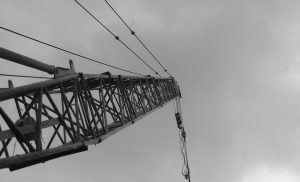Network Infrastructure Spending Up, Per Head Income Down
September 16, 2016
Many worldwide mobile infrastructure vendors with household names, such as Nokia Ericsson and Alcatel-Lucent, are starting to feel the gap between falling per head user spending and the seemingly inexhaustible need for more infrastructure.
ABI research believes that radio access network infrastructure will cost an extra 3.4% this year, which doesn’t sound like very much, but in the mega-scale of this business that amounts to an extra $54 billion this year alone.
At the same time companies such as Vodafone and Orange are commenting on dropping end user spending, but in this chicken and egg world these companies need to keep spending to upgrade essential elements of their networks or risk falling behind.
According to ABI the income/outgoings gap will only widen next year, as more new, much-have technology will need to be installed.
In many markets the numbers of users are exploding but per head sales are low, as these are in low income areas of low GDP counties.
ABI say that there are around 3.6 million base stations on the planet. This will grow to 5.2 million by 2013 and someone has to pay for them.
In the well established markets operators are turning to new technology to cut costs.
Deployment of 3.5G technologies, such as HSDPA and CDMA2000 Rev A, will significantly reduce running costs but that equipment has to be installed first before savings can be made.
Overall web traffic size continues to grow but this is due to additional amounts of data from gadgets such as RIM’s Bold, Nokia’s E71, Samsung’s Omnia, and Apple’s iPhone.
Network traffic is on the way up due to these devices and games and other downloads, so upgrades are needed to deal with the extra traffic.
On top of all this, 3.5G technologies are helping carriers to roll out new applications and services, but just on the horizon they see 4G technologies such as LTE and WiMAX will be needed to deliver any fundamental shift in the underlying cost of delivering Mbps.
ABI Research says companies are clearly moving towards LTE among the CDMA carrier community, complementing commitments from the W-CDMA carrier community.
However spending on GSM-related infrastructure still remains strong.
Carriers are investing in 3G and positioning for 4G but “good ol’ GSM” is not going away any time soon.











